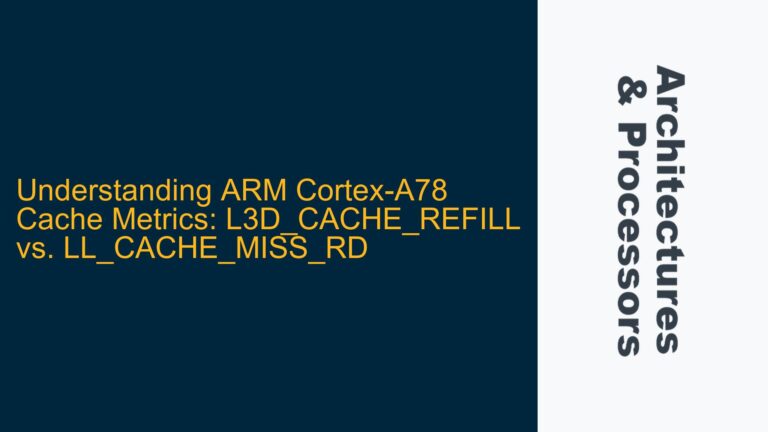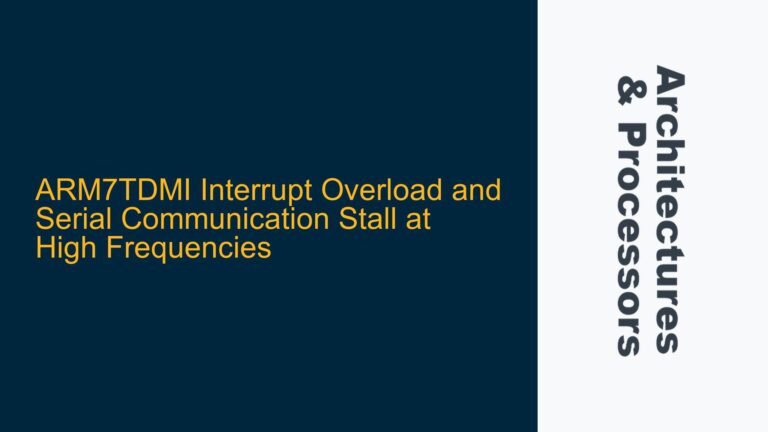AXI Slave Data Width Mismatch Between 128-bit AXI and 64-bit BRAM
When designing a custom AXI slave IP to interface with a BRAM (Block RAM) that has a different data width than the AXI bus, careful consideration must be given to how data transfers are handled. In this case, the AXI bus is 128 bits wide, while the BRAM is only 64 bits wide. This mismatch requires the AXI slave to perform data width conversion, which involves splitting wider AXI transactions into multiple narrower BRAM transactions and then reassembling the data to fulfill the AXI request.
The AXI protocol allows for burst transactions, where a single request can result in multiple data transfers. For a 128-bit AXI master issuing a read request to a 64-bit BRAM, each 128-bit read request must be broken down into two 64-bit BRAM reads. The AXI slave must then merge these two 64-bit reads into a single 128-bit response. This process must be handled carefully to ensure that the data is correctly aligned and that the AXI protocol’s timing requirements are met.
One of the key challenges in this scenario is managing the timing and synchronization of the data transfers. The AXI slave must ensure that the data from the two 64-bit BRAM reads is correctly combined and presented on the AXI bus within the required number of clock cycles. Failure to do so can result in protocol violations, such as timeouts, which can cause the system to hang or produce incorrect results.
Additionally, the AXI slave must handle the RID (Read ID) signal correctly. The RID signal is used to match read responses to the original read requests. When a read request is issued on the AXI bus, it includes an ARID (Address Read ID) value. The AXI slave must ensure that the corresponding RID value in the read response matches the ARID value from the request. This is crucial for maintaining the correct order of transactions and ensuring that the AXI interconnect can correctly route the responses back to the appropriate master.
Memory Access Timing and RID Signal Management
The primary issue in this scenario revolves around two key aspects: memory access timing and RID signal management. The memory access timing issue arises from the need to split a single 128-bit AXI read request into two 64-bit BRAM reads. This process introduces additional latency, as the AXI slave must wait for both BRAM reads to complete before it can assemble the 128-bit response and send it back to the AXI master. If the AXI slave does not manage this latency correctly, it can lead to timeouts, which are indicated by the warning message mentioned in the discussion.
The RID signal management issue is related to how the AXI slave handles the ARID and RID signals. The ARID signal is part of the read request and identifies the transaction. The RID signal must be included in the read response and must match the ARID value from the request. If the RID value is not correctly managed, the AXI interconnect may not be able to correctly associate the response with the request, leading to data corruption or system errors.
In addition to these issues, there may be other factors contributing to the problem. For example, the AXI slave may not be correctly handling the burst length and size signals, which specify the number of transfers in a burst and the size of each transfer. If the AXI slave does not correctly interpret these signals, it may not split the 128-bit requests into the correct number of 64-bit BRAM reads, leading to incorrect data being returned.
Another potential issue is the handling of the AXI protocol’s handshake signals, such as ARVALID, ARREADY, RVALID, and RREADY. These signals are used to control the flow of data between the AXI master and slave. If the AXI slave does not correctly manage these signals, it can lead to protocol violations, such as deadlocks or data loss.
Implementing Data Width Conversion and Correct RID Handling
To resolve the issues described above, the AXI slave must be designed to correctly handle data width conversion and RID signal management. The following steps outline the key considerations and solutions for implementing these features:
Data Width Conversion
The AXI slave must be designed to split 128-bit AXI read requests into two 64-bit BRAM reads. This involves the following steps:
-
Address Calculation: The AXI slave must calculate the addresses for the two 64-bit BRAM reads based on the address provided in the AXI read request. The first 64-bit read will use the original address, while the second 64-bit read will use the address incremented by 8 bytes (since each 64-bit read covers 8 bytes of memory).
-
Data Alignment: The AXI slave must ensure that the data from the two 64-bit BRAM reads is correctly aligned to form the 128-bit response. This involves concatenating the two 64-bit values in the correct order and ensuring that the data is correctly aligned with the AXI bus.
-
Latency Management: The AXI slave must manage the additional latency introduced by the two 64-bit BRAM reads. This can be done by using a state machine to control the timing of the BRAM reads and the assembly of the 128-bit response. The state machine must ensure that the AXI protocol’s timing requirements are met, including the correct handling of the RVALID and RREADY signals.
RID Signal Management
The AXI slave must ensure that the RID signal in the read response matches the ARID signal from the read request. This involves the following steps:
-
ARID Capture: When a read request is received, the AXI slave must capture the ARID value and store it for use in the read response. This can be done using a register or a small FIFO to store the ARID values until the corresponding read response is ready.
-
RID Assignment: When the read response is generated, the AXI slave must assign the RID value from the stored ARID value. This ensures that the RID value in the response matches the ARID value from the request.
-
Response Ordering: The AXI slave must ensure that read responses are returned in the correct order, even if the corresponding BRAM reads complete out of order. This can be achieved by using a buffer to store the read responses until they can be returned in the correct order.
Protocol Signal Handling
The AXI slave must correctly handle the AXI protocol’s handshake signals to avoid protocol violations. This involves the following steps:
-
ARVALID and ARREADY: The AXI slave must correctly manage the ARVALID and ARREADY signals to ensure that read requests are accepted and processed in a timely manner. The ARREADY signal should be asserted when the AXI slave is ready to accept a new read request.
-
RVALID and RREADY: The AXI slave must correctly manage the RVALID and RREADY signals to ensure that read responses are returned to the AXI master in a timely manner. The RVALID signal should be asserted when the read response is ready, and the RREADY signal should be monitored to ensure that the response is accepted by the AXI master.
-
Burst Length and Size: The AXI slave must correctly interpret the burst length and size signals to ensure that the correct number of BRAM reads are performed for each AXI read request. The burst length signal specifies the number of transfers in the burst, while the burst size signal specifies the size of each transfer.
Example Implementation
The following table summarizes the key steps and considerations for implementing the data width conversion and RID handling in the AXI slave:
| Step | Description | Considerations |
|---|---|---|
| Address Calculation | Calculate the addresses for the two 64-bit BRAM reads based on the AXI read request address. | Ensure that the addresses are correctly aligned with the BRAM memory. |
| Data Alignment | Concatenate the two 64-bit BRAM reads to form the 128-bit AXI response. | Ensure that the data is correctly aligned with the AXI bus. |
| Latency Management | Use a state machine to manage the timing of the BRAM reads and the assembly of the 128-bit response. | Ensure that the AXI protocol’s timing requirements are met. |
| ARID Capture | Capture the ARID value from the read request and store it for use in the read response. | Use a register or FIFO to store the ARID values. |
| RID Assignment | Assign the RID value in the read response from the stored ARID value. | Ensure that the RID value matches the ARID value from the request. |
| Response Ordering | Ensure that read responses are returned in the correct order. | Use a buffer to store responses until they can be returned in order. |
| Protocol Signal Handling | Correctly manage the AXI protocol’s handshake signals. | Ensure that ARVALID, ARREADY, RVALID, and RREADY are correctly handled. |
By following these steps and considerations, the AXI slave can be designed to correctly handle the data width conversion and RID signal management, ensuring that the system operates correctly and efficiently.
Conclusion
Designing a custom AXI slave IP to interface with a BRAM that has a different data width than the AXI bus requires careful consideration of several key factors, including data width conversion, RID signal management, and protocol signal handling. By addressing these issues and implementing the necessary features, the AXI slave can be designed to operate correctly and efficiently, avoiding protocol violations and ensuring that the system performs as expected.






